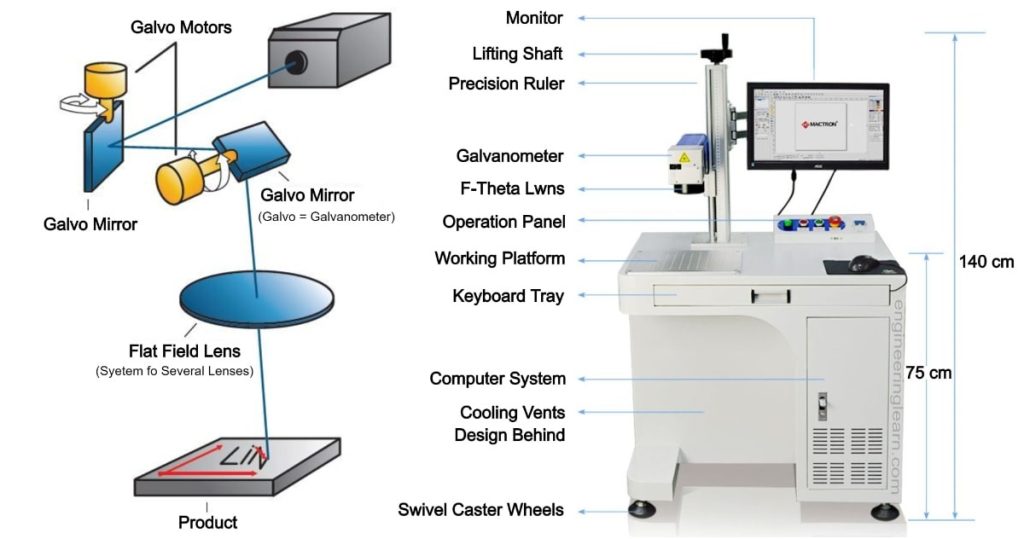Choosing the right laser marking machine for your specific needs requires careful consideration of several factors. Here are the steps to help you make an informed decision:
- Understand your marking requirements:
- Start by defining your specific marking needs. What type of materials will you be marking on? What kind of marks do you need (e.g., text, graphics, barcodes, serial numbers, logos)? What are the required marking depth, speed, and accuracy?
2.Material compatibility:
- Determine the materials you’ll be marking on. Different laser types are better suited for specific materials. Common laser types include fiber lasers (for metals and plastics), CO2 lasers (for organic materials like wood, glass, and some plastics), and UV lasers (for sensitive materials like certain plastics and glass). Ensure the laser type matches your material.
3.Laser power and wavelength:
- Select an appropriate laser power and wavelength based on the depth and quality of the marks you need to achieve. Higher power lasers can mark deeper and faster, but they may also generate more heat.
4.Marking area and size:
- Consider the size and dimensions of the objects you’ll be marking. Choose a machine with an adequate marking area to accommodate your workpieces.
5.Marking speed:
- Determine your required marking speed. Faster machines are more productive, but they may come at a higher cost. Balancing speed with precision is essential.
6.Quality and resolution:
- Assess the desired quality and resolution of the marks. Some applications may require high precision and detail, while others may allow for more straightforward marks.
7.Integration and compatibility:
- If you plan to integrate the laser marking machine into an existing production line or software system, ensure it is compatible with your equipment and software.
8.Ease of use and software:
- Consider the user-friendliness of the machine’s software interface. Look for features like easy design import, quick setup, and the ability to generate variable data marks (serial numbers, barcodes, etc.).
9.Maintenance and support:
- Check the maintenance requirements of the machine, as well as the availability of technical support and spare parts. Reliable customer support is crucial for resolving issues quickly.
10.Safety and compliance:
- Ensure the laser marking machine complies with safety regulations and standards in your area. Laser safety is critical, and you need to provide proper safety measures for your employees.
11. Budget:
- Determine your budget constraints and choose a machine that fits within your financial limits. Keep in mind that cheaper options may have limitations in terms of features and quality.
12.User reviews and references:
- Research customer reviews and seek references from other users or industry experts to get a better understanding of the machine’s performance and reliability.
13.Test and demonstration:
- Whenever possible, visit the manufacturer’s facility or attend a trade show to see the machine in action. Testing the machine on your actual materials and samples can provide valuable insights.
14.Warranty and post-purchase support:
- Review the warranty terms and after-sales support options. A good warranty and reliable support can save you time and money in the long run.
Ultimately, the choice of a laser marking machine should align with your specific application, production requirements, and budget. It’s essential to thoroughly research and compare different models and consult with experts if needed to make an informed decision.

